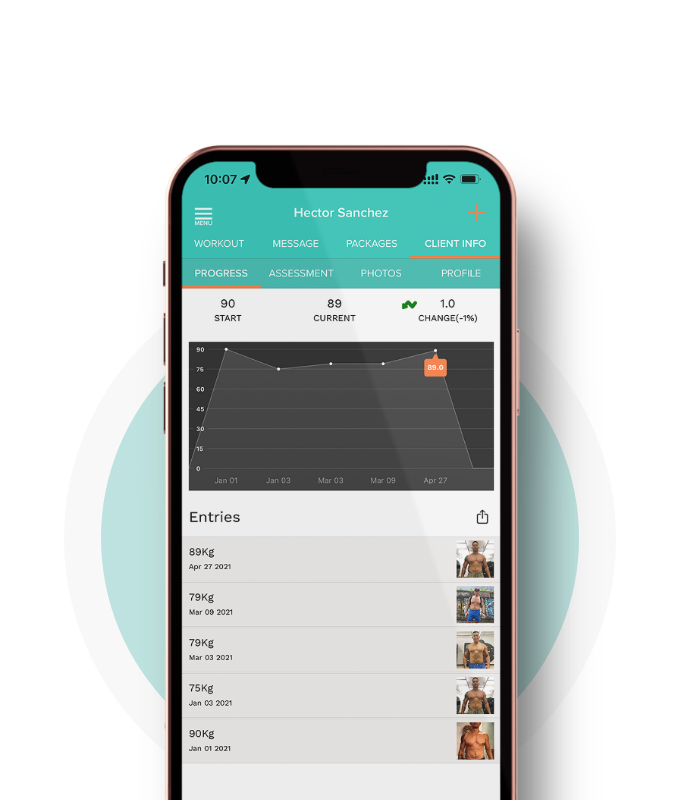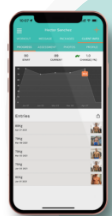Take Your Workouts to the Next Level with These Expert Tips
- Track them! First and foremost, even if you don’t follow our programs, at least follow your own and progress one thing each workout. Sets, reps, less rest, more weight, tempo, pairings...the list is endless. Tracking your progress is a surefire way to progress. Consider using a heart rate monitor from companies like Garmin, Polar, or Fitbit to track your progress and intensity.
- Garmin: https://www.garmin.com/en-US/fitness/heart-rate-monitors/
- Polar: https://www.polar.com/us-en/heart-rate-monitors
- Fitbit: https://www.fitbit.com/shop/heart-rate
- Heart Rate Monitor: How hard was that workout for you? Or that exercise? The heart rate monitor you could be wearing is a great tool to assess not just the total workout, but the recovery from an individual exercise. For instance, some men do very well with upper body work, and their heart rate stays quite low when doing so. However, when performing either high rep upper body or lower body altogether, their heart rate response is a far different than upper body for strength. Companies like Garmin, Polar, and Fitbit offer a range of heart rate monitors that can be worn as watches or chest straps.
- Garmin: https://www.garmin.com/en-US/fitness/heart-rate-monitors/
- Polar: https://www.polar.com/us-en/heart-rate-monitors
- Fitbit: https://www.fitbit.com/shop/heart-rate
- Stay hydrated: before, during and after a workout, it is super important to give muscles (which store a lot of water in them) the hydration they need. In addition, post-workout hydration is crucial to help recover, keep you feeling full, and get ready for the next workout. Speaking of fullness, sometimes seltzer water can be a great substitute to your afternoon hunger pangs, especially when you’re not actually hungry and are thirsty instead. Companies like CamelBak, Hydro Flask, and Nalgene offer a range of water bottles, hydration packs, and other products to help you stay hydrated during and after your workouts.
- CamelBak: https://www.camelbak.com/
- Hydro Flask: https://www.hydroflask.com/
- Nalgene: https://www.nalgene.com/
-
Big movements: Also known as the ‘big rocks in the pail’, these movements include deadlifts, squats, lunges, swings, get-ups, carries, presses, and pulls. These staples are the essential ways the body moves, and training these exercises has shown to give the greatest return on your investment of time and energy (and money too!). Prioritize them for 70—80% of the workout, and fill the rest in with accessory movements.
-
Pre and Post Nutrition: From an energy standpoint, figure out what works best for you, including fasting and drinking amino acids before and during a workout first thing in the morning. Working out at lunch? 90-120 minutes before try to ingest carbs and protein (and minimal fat). And then 1-2 hours afterwards, ingest carbs and protein, also with minimal fat. This will help surround your workout with fuel for the workout and in addition
-
Warming up: Like a cold car that needs an engine to warm up before driving it, our bodies need some time spent moving around to lubricate the joints, tendons, ligaments and muscular system before lifting and moving. 5-10 minutes is minimum, 10-15 is plenty.
-
Feel the Muscle: Ask yourself the following questions throughout your workout, pending your level of training: what muscle is working right now? What muscle should be working? What can I do or change to feel it more in the muscle that I should be working? For example, when doing push-ups incorrectly, most feel it in the front of their shoulder. Correct push-ups should be felt in the chest first, triceps second, and shoulders third. The mind-to-muscle connection is one of the hardest to make but yields great dividends when maximized.
-
Cardio doesn’t have to be long and slow: HIIT, or High-Intensity Interval Training, consists of short bursts of 85% or more intensity with sufficient rest in order to return to that prior level of intensity. If you hate cardio (most of our clients do) then HIIT is a good, safe bet on the AirDyne, Rower, Slideboard, Jump Rope or Battling Ropes. Make sure you’re fully warmed up, though, and if you’re adding it to a workout, add it to the end of your workout. Strength first, cardio and intervals second.
-
Get a Coach: The winner of the first Boston Marathon could not automatically qualify for next year’s race: sure they had experience running back then, but today, the expertise and experience needed to win far surpasses the levels then. Similarly, coaching isn’t just about the best way forward, it’s also about minimizing the steps backward. Consider hiring a coach from companies like Fitplan, Beachbody, or Team Beachbody for online coaching and workout
In conclusion, there are many ways to make your workouts more effective, from tracking your progress and using a heart rate monitor, to staying hydrated and focusing on big movements. Pre and post nutrition, a proper warm-up, and the mind-to-muscle connection are also important factors to consider. Cardio doesn't have to be long and slow, and hiring a coach can help you maximize your progress and minimize setbacks. By following these tips, you can take your workouts to the next level and see the results you desire.
By: Hector Sanchez




